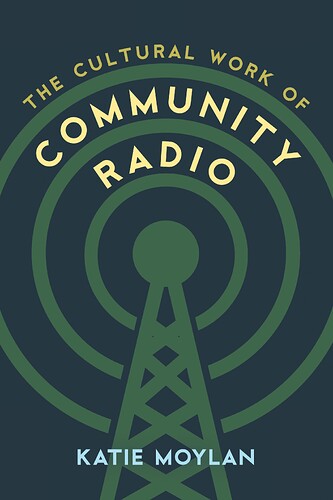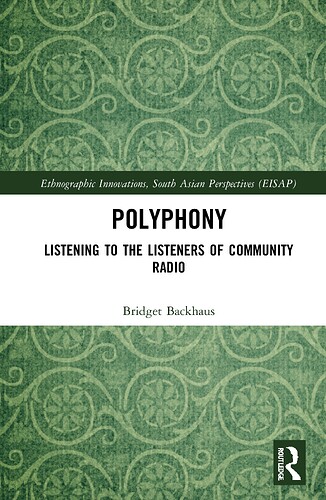Topic for sharing scripts and audio works on sound and radio communities, platforms, experiments, soundart, and scientific broadcasts.
In you find something that is interested to you and want to read or hear it, you can write us on radiokrov@dmz.rs so we can send you material.
Poglavlje za deljenje svih skripti i audio radova o zvucnim zajednicama, platformama, eksperimentima, umetnickim delima i naucnim emisijama. Ukoliko ste zainteresovani za odredjene radove, možete nam pisati na radiokrov@dmz.rs kako bismo vam poslali materijal.
The Cultural Work of Community Radio investigates the multiple modes of community and broadcasting practice at selected community stations, explores how these draw from and reflect ongoing concerns of their host city or region, and examines how on the ground practice maps on to overarching broadcast policy directives and guidelines.
This book looks at the rich and complex history of broadcasting and community broadcasting in the multicultural and multilingual milieu in India. It explores the world of community radio and how community radio broadcasters hear and speak to their audiences under the overarching theme of polyphony. The book discusses the socio-historical contexts which allowed community radio to thrive in India. It highlights its potential to create alternative spaces of representation, and opportunity and its importance in preserving and disseminating local knowledge and traditions.
Nominally a guide to starting a home-grown, community radio station, this idiosyncratic book offers much more than that, including a passionate defense of noncommercial broadcasting. Lorenzo W. Milam, a pioneer in the development of listener-supported community radio, shares his enthusiasm and insights in a volume that has already inspired a generation of broadcasters and listeners and is poised to do the same for the podcasting generation. Although the details may change, the desire to communicate directly and honestly with a wider audience is a constant, and this impulse is fueled by Milam’s splendidly eccentric handbook.
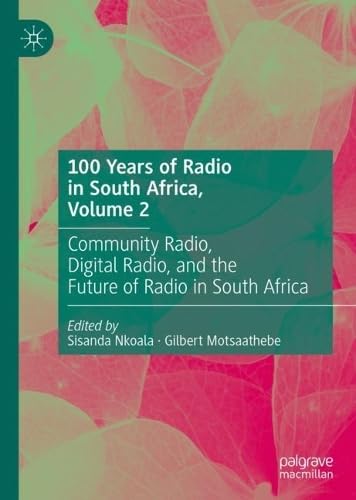
The book brings together media scholars and practitioners to deliberate on the role and influence of radio broadcasting in South Africa over the past 100 years. The publication will add to the existing body of knowledge on radio in this context by being among one of the few to consider radio broadcasting in South Africa. Essentially, the book will make a distinct contribution focusing on a critique of the medium’s role in community-building and culture making among others. While the book will provide relevant theoretical frameworks, it also aims to include the voices of media practitioners who can reflect on the importance of this medium from a more realistic perspective. Volume 2 focuses on the impact of digitization on radio in South Africa, and considers the future of radio in South Africa.
The radio spectrum, regulated in the US since 1927 for the “public interest, convenience, and necessity,” has long been viewed by artists as an unrealized, utopian public space. Today, many artists use FM radio, wireless, and the electromagnetic spectrum to make work usually described as electronic or new media art. However, there is often a public and politicized quality to this work: artistic (mis)use of the radio spectrum may activate a public around secret listening, detourne and rebroadcast the normal content of the airwaves, or “drown out” corporate broadcasts in a highly local area. This paper discusses several recent projects to argue that artwork in the “electomagnetic commons” complements field of public art in important ways
Kanouse, Sarah, “Take it to the air: radio as public art,” Art Journal 70(3): 86-99.
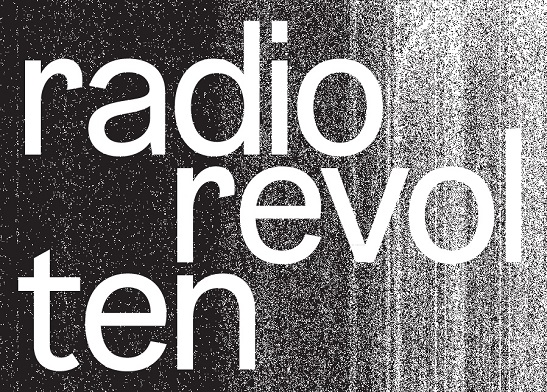
The title 30 Days of Radio Art conveys the attempt to hold onto an elusive moment in radio history. The radiophonic Fata Morgana we called Radio Revolten came, according to some participants, very close to being a genuine space of freedom for radio production. A space that allowed for a clear consciousness to roam free despite the unsettling times we live in. How can we represent the 720 intense hours of the festival programme,
produced at locations and on frequencies that were temporary in nature?
How can we describe a month long international radio art festival, its wishes, outcomes and impacts? In an attempt to convey as much detail as possible, this book seeks to awaken, stimulate, encourage, and to extend
faith in the provision of collective artistic radio spaces. In a continuance of the spirit from our original endeavour, it has been written collectively by the festival’s curators, organisers, artists, and observers.
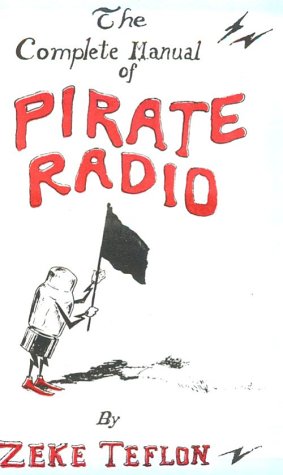
This booklet is intended for everyone who has a message to communicate, but no means with which to do it. THE COMPLETE MANUAL OF PIRATE RADIO will provide the information necessary to obtain that means. So, if you want to provide an alternative to the corporate-controlled newspapers and magazines, the insane howling on religious radio and TV stations, the reactionary pap on commercial stations (designed to offend neither the advertisers nor corporate owners), and the innocuous animals-and-British accents programming on “public” (government-owned) stations, read on!

In this volume, international artists, media theorists, art historians, and curators explore histories and concepts of radio and art- in a world where old and new notions of communication and distribution are converging in the vast radio network known as the cell phone.
The book contains 45 articles which are all related to radio art. Some of them are written of a historical point of view, some of them are quite technical and other articles are written by radio artists or describe radio art projects (like kunstradio).
